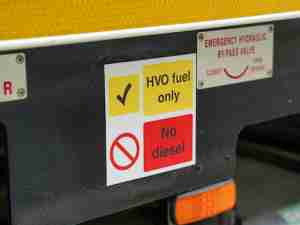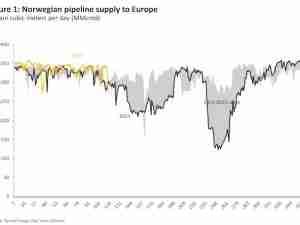Dakota Access Oil Line Outlasts Protests, Readies for Service
By: | Mar 28 2017 at 12:01 AM | Maritime
In the end, the pipeline won.
Dakota Access, which became a rallying point for tens of thousands of anti-fossil fuel and Native American-rights protesters, is preparing for service, a court filing on Monday showed. Now that the last segment built underneath Lake Oahe has been filled with oil, it’s only a matter of time before the line delivers crude from North Dakota’s once-booming Bakken shale region. That’ll be a boon to drillers there who’ve lost market share amid low oil prices to rivals in Texas and elsewhere with better access to Gulf Coast refineries and terminals.
“No doubt, this makes the Bakken more competitive,” said Rob Thummel, managing director at Tortoise Capital Advisors.
The filing, by Dakota Access’s developer, came just three days after the State Department issued a presidential permit approving the controversial Keystone XL oil pipeline, which when completed would run from Canada into America’s heartland. President Donald Trump’s support of both pipeline projects represents a dramatic reversal from former President Barack Obama’s opposition to them on environmental grounds.
Until now, Bakken crude has had to travel through a circuitous network of other pipelines and by pricier rail, one reason production has fallen in North Dakota as explorers shifted their focus to cheaper Texas reserves.
It’s been a long and ugly fight bringing to life one of the most contentious pipeline projects in recent memory. Just a few years ago, the Bakken was the Wild West of oil, with boom towns, man camps and casinos fueled by speculative plays on soaring oil prices. Following the crash in prices, drillers of the remote northern plains hoped new transport options like Dakota Access would help them remain competitive—only to be stymied by fierce protests.
For more on the hurdles that TransCanada’s Keystone pipeline still faces, click here.
In early 2016, members of the Sioux nation and hardy environmentalists began camping out along the proposed route in protest. Their ranks swelled in late summer after construction crews bulldozed a site sacred to Native Americans. Hollywood celebrities including Mark Ruffalo and Leonardo DiCaprio flocked to the Standing Rock reservation to lend support. Shailene Woodley was arrested and led away in handcuffs. It all went viral on social media.
But after Trump’s election, the government swept away protesters, at one point with high-pressure water hoses in the icy North Dakota winter. And soon thereafter Trump signed an executive order clearing the way for the pipeline’s final segment to be built.
$3.8 Billion
Now, finally, Energy Transfer Partners LP, the company behind the $3.8 billion project, is commissioning the 1,172-mile (1,886-kilometer) pipeline with crude. Once at full capacity, it’ll be able to ship 570,000 barrels a day across four states to Patoka, Illinois, where the fuel can be diverted to markets across the Midwest and Gulf Coast.
“Dakota Access is currently commissioning the full pipeline and is preparing to place the pipeline into service,” the company said in the court filing released Monday.
The Standing Rock Sioux tribe that has protested the project for months said in a statement March 24 that it would continue to fight it in court and “stand with the many tribes threatened” by the Keystone XL pipeline too.
Once the poster-child for America’s shale boom, Bakken oil output tumbled 23 percent from its peak, reaching the lowest in almost three years in December. With Dakota Access in place, the spread between Bakken crude prices and that for U.S. benchmark West Texas Intermediate could disappear as soon as June 1 because of the “sheer number of committed shippers,” Andy Lipow, president of Lipow Oil Associates, a Houston-based consulting company, said by phone. That could spur more production in North Dakota as the fuel gets increasingly transported by pipe instead of rail out of the region, Lipow said.
By Rail
Dakota Access will reduce the need to ship 150,000 barrels a day by rail, according to Tony Scott, a managing director at BTU Analytics in Colorado.
“It should lower the cost for everyone in the system,” Scott said in a phone interview, citing oil companies including Hess Corp. as beneficiaries since they’re so heavily invested in the Bakken.
As more supplies are shipped south on Dakota Access, oil prices in Texas may fall, opening markets overseas, said Dominic Haywood, a London-based analyst for Energy Aspects Ltd.
“Producers may look to export Dakota Access crude rather than sell on the Gulf Coast,” Haywood said by email.
Bakken crude priced for delivery at Clearbrook, Minnesota, was trading at $47.98 per barrel on Monday, according to data compiled by Bloomberg. West Texas Intermediate was at $47.73.
17 Banks
For months before the Trump administration cleared the way for Dakota Access, the pipeline became a symbol in the broader environmental movement to curb fossil fuels. Opponents included politicians from New York City Mayor Bill de Blasio to Seattle’s city council, which called on banks to pull out of the project. Kelcy Warren, Energy Transfer’s chief executive officer, said he’d underestimated the power of social media.
Ultimately, 17 banks including Wells Fargo & Co. and Citigroup Inc. that were contractually obligated to finance the project did so. Energy Transfer, which spearheaded the project, sold off minority stakes in it to companies including Enbridge Inc. and Marathon Petroleum Corp.
“Some of the biggest infrastructure names in the U.S. want a piece of this pipeline,” said Thummel. “They all obviously think this is a critical pipeline.”
The thinking, Thummel said, is the line will be operational for decades. The U.S. shale industry has established itself as a permanent and substantial supplier to global markets.
“Yes, Bakken has some economic challenges, especially with oil below $50 a barrel,” he said. “But the Bakken will be relevant again at some point in the future and this pipeline is one that will help.”








